Lawsuits
The Disputed Measurements of Miss France
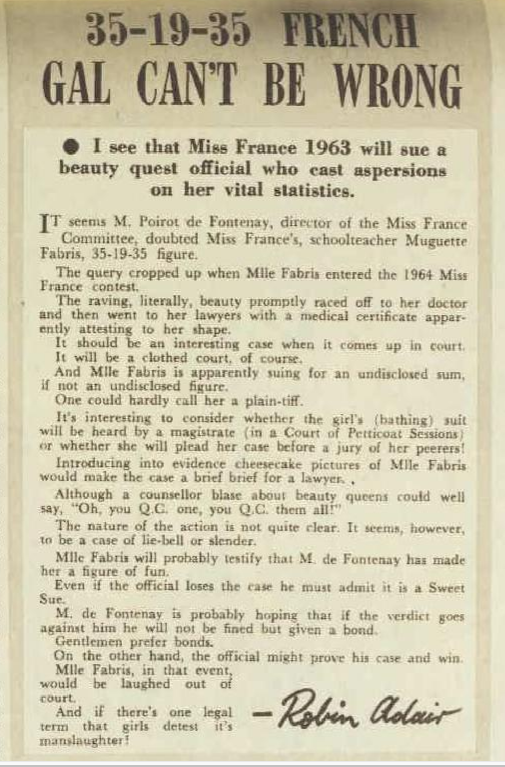
Article source.
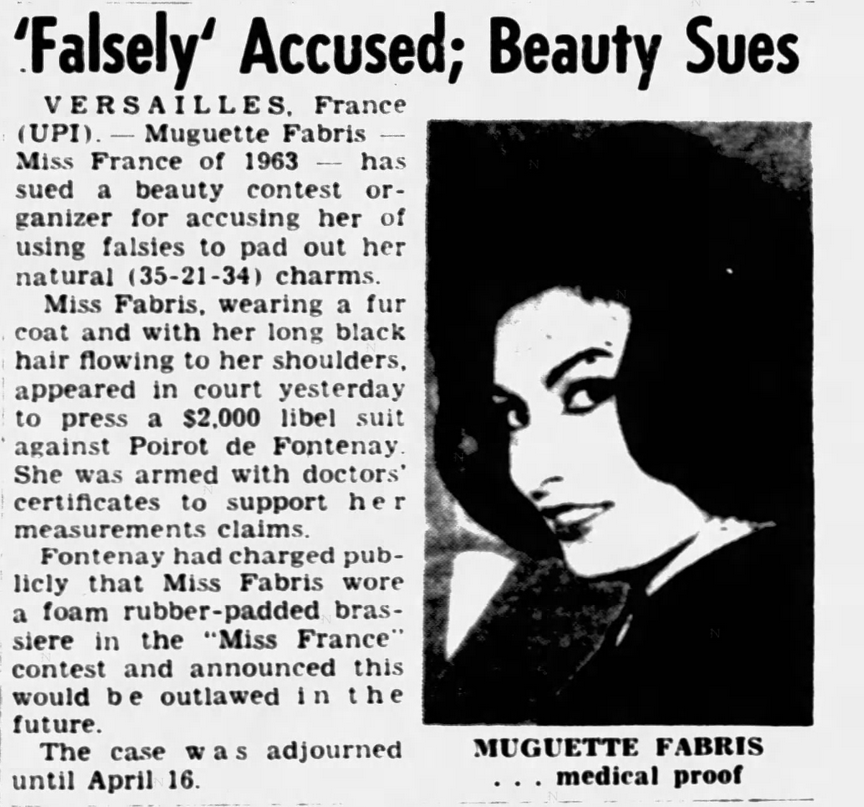
Article source: Philadelphia Daily News (Philadelphia, Pennsylvania) 07 Feb 1964, Fri Page 14
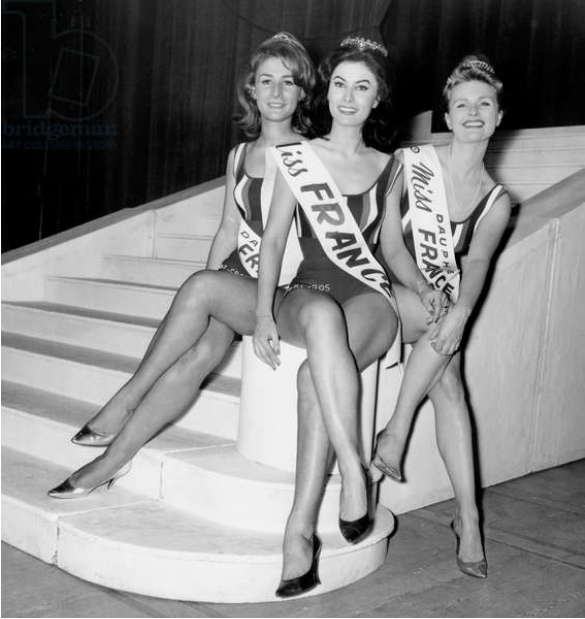
The New Miss France 1963 Muguette Fabris and her Dauphines Daniele Chevalier (L) and Michele Fourtain Povel (R) January 01, 1963
Posted By: Paul - Fri Jul 15, 2022 -
Comments (1)
Category: Awards, Prizes, Competitions and Contests, Beauty, Ugliness and Other Aesthetic Issues, Body, Lies, Dishonesty and Cheating, Lawsuits, 1960s
United States v. 350 Cartons of Canned Sardines
This case is known in legal circles primarily because of its odd name.It occurred in 1934 and involved 350 cartons of canned sardines shipped from California to Pennsylvania. The FDA examined some of the cans at its lab in Washington DC and decided that they contained "decomposed animal substance." Therefore, it ordered all 350 cartons to be destroyed.
The sardine company challenged this order in court. It lost the initial case, but won on appeal. Though, by that time, two years later, the sardines may already have been destroyed.
As far as I can tell, the case represented a power struggle between the California inspectors (who had approved the fish for shipment) and the federal ones. The FDA's decision seems to have been somewhat arbitrary. Its inspector decided the fish were decomposed not because of how they smelled or tasted. He said they smelled fine. He concluded they were 'decomposed' simply because they looked slightly pink — which was probably because they had been cooked in tomato sauce.
Read more about the case here.
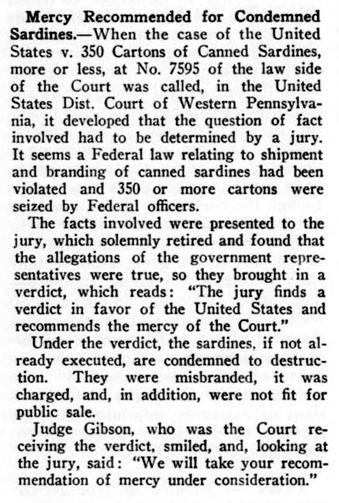
Case and Comment - Autumn 1934
Posted By: Alex - Wed Jul 13, 2022 -
Comments (2)
Category: Odd Names, Lawsuits, 1930s
Wolfe v. Feldman
Peter Ackerberg, writing in the Minneapolis Star (Nov 17, 1979), described the unusual legal case of Wolfe v. Feldman, which was heard in 1936:Feldman countered that it wasn't his fault, and he told the judge this story:
Wolfe was strapped to the dentist's chair (apparently a common procedure then), and was given nitrous oxide, an anesthesia better known as laughing gas. What happened next was no laughing matter.
The next part of the story is best summarized in the text of the case itself:
So the patient, while under the influence of laughing gas, managed to grab hold of the dentist's testicles, and in the process of freeing himself the dentist fractured her little finger.
Nevertheless, the judge ruled in favor of the patient for $650, saying:
Posted By: Alex - Tue Apr 26, 2022 -
Comments (0)
Category: Lawsuits, 1930s, Teeth
The Sauna Bath Nymphomaniac
The case of the cable car nymphomaniac is a classic weird news story. Less well known, but along similar lines, is the case of the sauna bath nymphomaniac.Maria Parson claimed that the trauma of being accidentally locked in a sauna for half-an-hour due to a faulty door handle caused her to develop a split personality. She came to have three personalities: "sex-hungry Maria" who prowled bars picking up men, "remorseful Betty" who bitterly resented Maria's escapades, and her submerged real self.
She sued the health spa for $1 million, but lost — even though she was represented by the same lawyer who had secured a win for the cable car nymphomaniac.
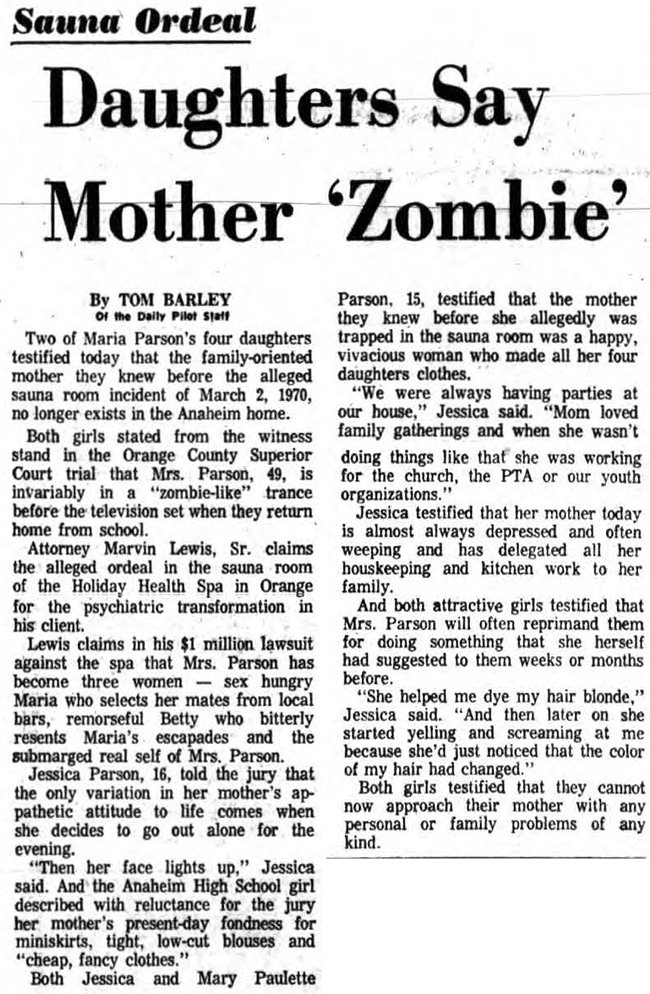
Orange Coast Pilot - Dec 20, 1973
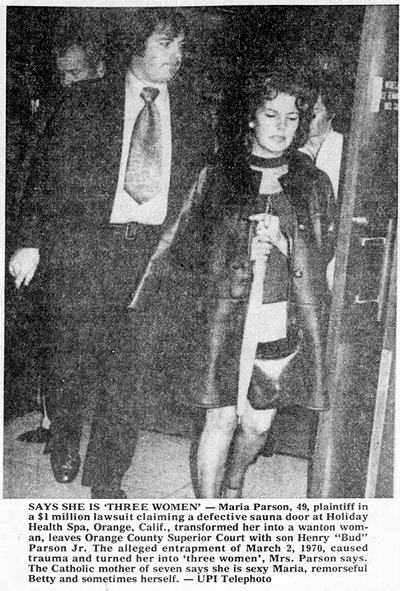
Bellingham Herald - Jan 10, 1974
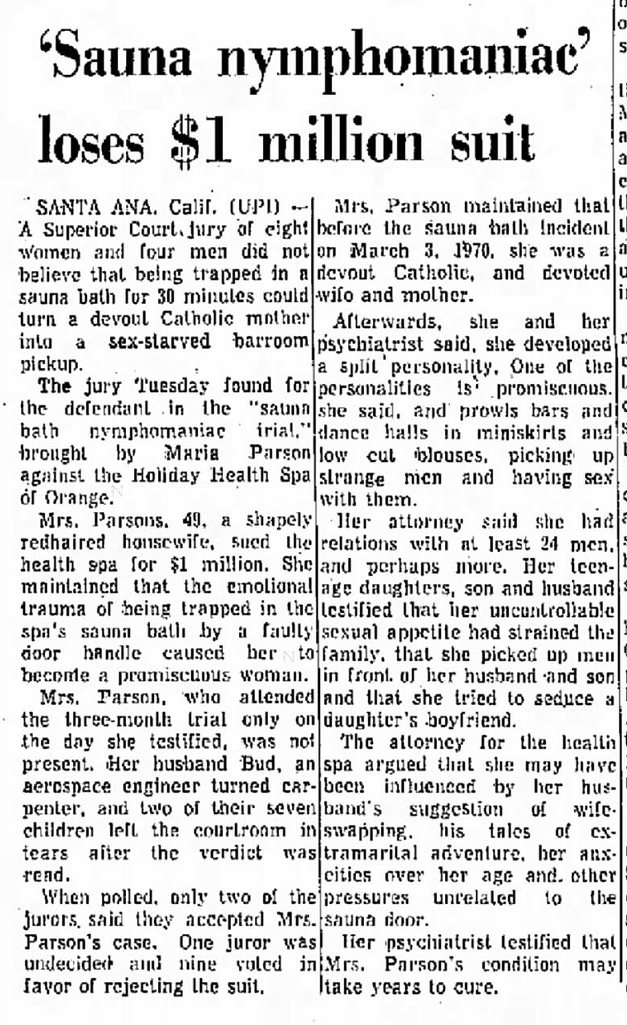
Eureka Times Standard - Mar 6, 1974
Posted By: Alex - Wed Apr 20, 2022 -
Comments (1)
Category: Lawsuits, Psychology, 1970s, Sex
Why Velna Turnage sued Christy Brothers Circus
From the case Christy Bros. Circus v. Turnage heard in the Georgia Court of Appeals, dated Sep. 15, 1928:Velna Turnage was awarded $500 for her "humiliation and embarrassment".
Posted By: Alex - Wed Apr 13, 2022 -
Comments (6)
Category: Lawsuits, Excrement, 1920s
Understanding the Law: The Worm
Understanding the Law: The Worm, Diane Obomsawin, provided by the National Film Board of Canada
Posted By: Paul - Sun Feb 13, 2022 -
Comments (2)
Category: Law, Lawsuits, PSA’s, Cartoons, 1990s
The Arctic Venus
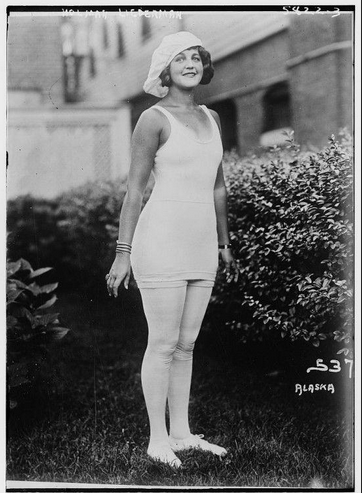
Helmar Leiderman was the first Miss Alaska. Not really one of of our "oddball beauty titles." Except that when she was disqualified on a technicality during the Miss America contest, she sued and was later arrested.
Article source: The San Francisco Examiner (San Francisco, California) 01 Nov 1925, Sun Page 140
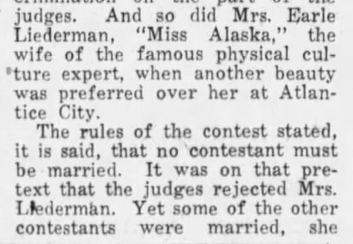
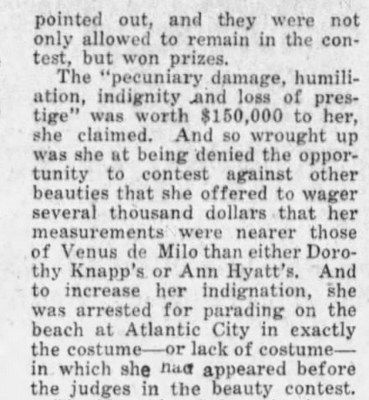
Posted By: Paul - Fri Oct 08, 2021 -
Comments (0)
Category: Awards, Prizes, Competitions and Contests, Beauty, Ugliness and Other Aesthetic Issues, Lawsuits, 1920s
Unauthorized Dwellings 17
Are the entire populations of San Francisco and Sacramento squatters? One person, John Sutter, believed so.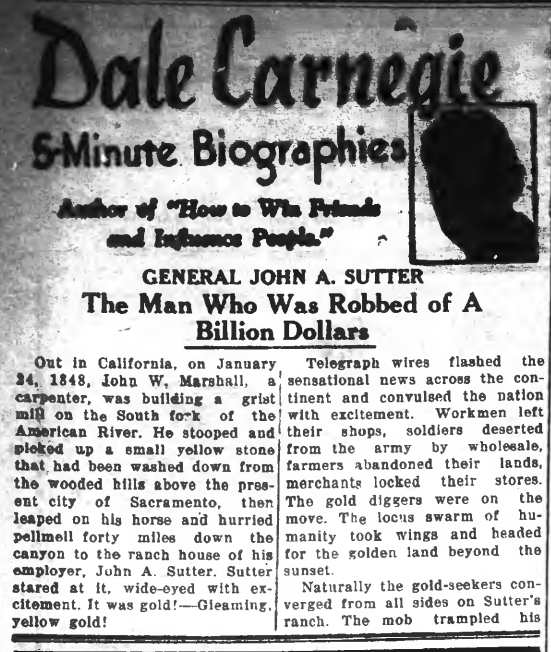
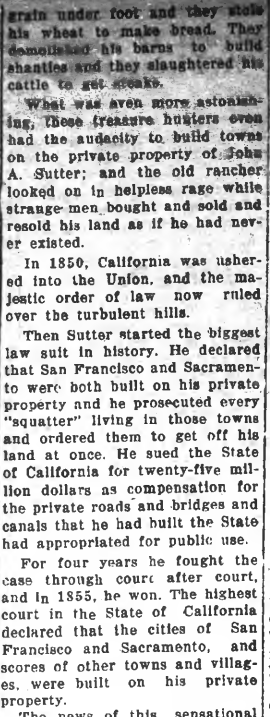
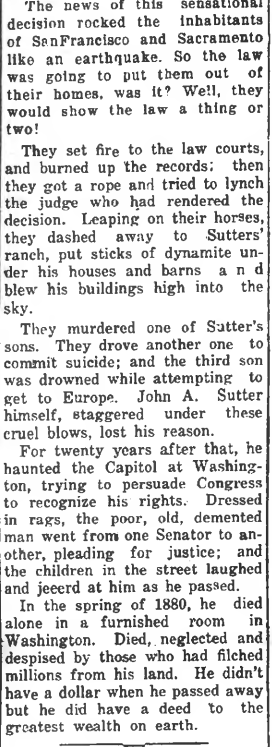
Article source.
Posted By: Paul - Wed Jun 30, 2021 -
Comments (2)
Category: Lawsuits, Unauthorized Dwellings, North America, Nineteenth Century
Stripper Unsexy?
Source: Nanaimo Daily News (Nanaimo, British Columbia, Canada)14 Sep 1957, Sat Page 2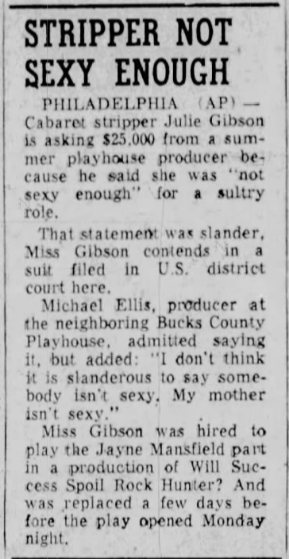

Posted By: Paul - Tue May 25, 2021 -
Comments (2)
Category: Theater and Stage, Lawsuits, Sex Symbols, 1950s
Eviction caused bad breath, dandruff
1979: After being evicted from the townhouse he was renting, R.L. Ussery filed a lawsuit against his former landlord seeking $11,000 in compensation. Ussery claimed that the eviction had caused him and his family to suffer from "colds, nausea, upset stomach, diarrhea dysentery, loss of hair, sweating palms, the need to void, the inability to void, nightmares, insomnia, dandruff, bad breath, dirty fingernails, odoriferous body odors, especially of the feet, palm itching, the blues and the blahs, nervousness, dry heaves and crying spells."I don't know what the result of the lawsuit was, but I think it's highly unlikely that Ussery won.
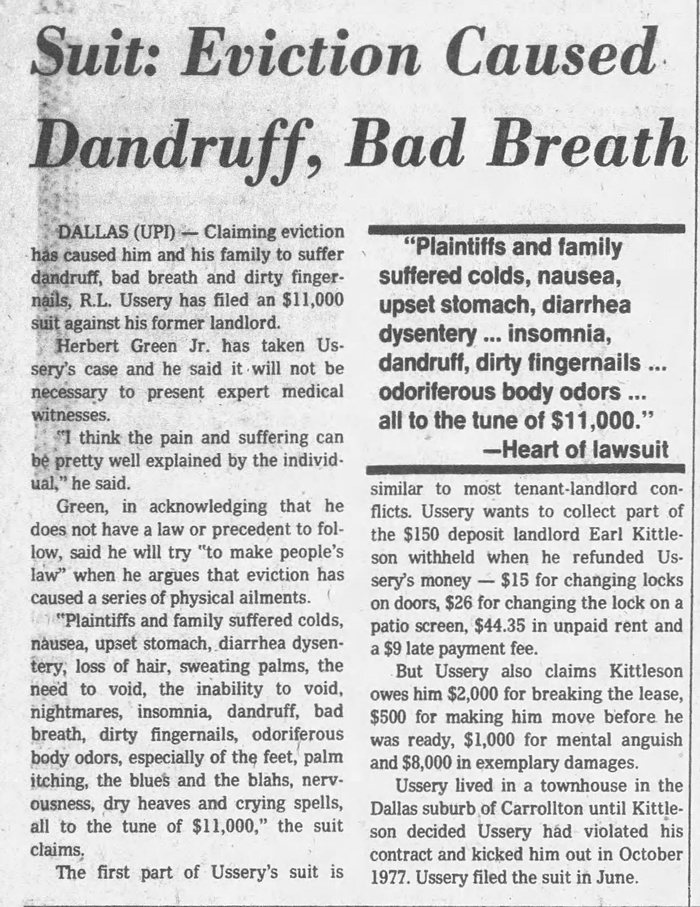
Tampa Tribune - Aug 24, 1979
Posted By: Alex - Mon May 17, 2021 -
Comments (1)
Category: Lawsuits, 1970s

| Who We Are |
|---|
| Alex Boese Alex is the creator and curator of the Museum of Hoaxes. He's also the author of various weird, non-fiction, science-themed books such as Elephants on Acid and Psychedelic Apes. Paul Di Filippo Paul has been paid to put weird ideas into fictional form for over thirty years, in his career as a noted science fiction writer. He has recently begun blogging on many curious topics with three fellow writers at The Inferior 4+1. Contact Us |




